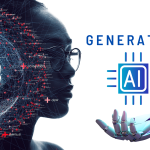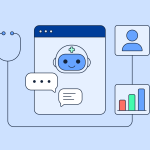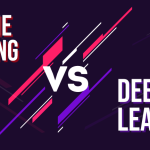In today’s hyperconnected world, cybersecurity threats have become more advanced, unpredictable, and automated than ever before. Traditional security systems struggle to keep pace with rapidly evolving cyberattacks, especially those leveraging automation or AI. To combat this, the integration of artificial intelligence (AI) into cybersecurity has emerged as a revolutionary force enabling faster detection, smarter prevention, and stronger protection across digital environments.
Table of Contents
What Is AI-Powered Cybersecurity?
AI-powered cybersecurity refers to the use of machine learning (ML) algorithms, data analytics, and automation to detect, analyze, and respond to cyber threats more efficiently than human analysts alone.
Unlike rule-based security systems that rely on predefined patterns, AI-driven systems learn from data. They can identify unusual patterns, predict new types of attacks, and adapt in real time providing a proactive rather than reactive defense model.
How AI Transforms Cybersecurity
AI enhances every layer of cybersecurity infrastructure, from threat detection to incident response. Here’s how it works:
- Threat Detection and Prediction
AI analyzes vast datasets from network traffic, logs, and user behavior to identify anomalies that could signal a cyberattack. For example, AI can detect unusual login attempts, unauthorized data access, or irregular file transfers within seconds. - Automated Response
Once a threat is identified, AI can trigger automated responses such as isolating affected systems, blocking suspicious IPs, or alerting administrators minimizing damage and downtime. - Behavioral Analysis
Machine learning models establish baselines of “normal” behavior for users and systems. Any deviation such as a sudden data download or remote login at odd hours can be flagged as a potential threat. - Threat Intelligence
AI constantly scans the web, dark web, and databases to gather intelligence about new vulnerabilities or malware strains, helping organizations stay ahead of emerging threats.
Key Benefits of AI in Cybersecurity
- Speed and Scalability
AI processes data faster than any human team, analyzing millions of data points in real time. This speed is essential for identifying and neutralizing zero-day threats. - Reduced False Positives
Traditional systems often overwhelm analysts with false alerts. AI improves accuracy by learning which behaviors are genuinely suspicious, saving time and resources. - Proactive Defense
Rather than waiting for an attack to occur, AI predicts potential vulnerabilities and takes preventive action patching systems, blocking threats, or alerting teams in advance. - 24/7 Monitoring
AI never sleeps. Continuous monitoring ensures constant protection across all devices and networks without human fatigue or oversight.
Real-World Applications of AI in Cybersecurity
- Email Security: AI filters phishing emails by analyzing language patterns, links, and sender reputations.
- Network Protection: AI-based systems detect Distributed Denial-of-Service (DDoS) attacks and mitigate them in real time.
- Fraud Detection: Banks use AI models to identify suspicious transactions or login attempts, preventing identity theft and fraud.
- Endpoint Security: AI-powered antivirus software continuously learns from new malware samples, offering adaptive protection.
AI vs. Traditional Cybersecurity
Traditional cybersecurity relies on static signatures and known threat databases. While effective against familiar attacks, it struggles with new or evolving threats. AI, on the other hand, learns continuously from experience, making it far better equipped to identify novel attacks and polymorphic malware.
However, AI doesn’t replace human experts it augments them. By automating repetitive tasks and alerting analysts only when necessary, AI allows security teams to focus on complex and strategic challenges.
Challenges and Ethical Concerns
Despite its potential, AI in cybersecurity isn’t without risks:
- AI-Powered Attacks: Hackers can also use AI to launch smarter, more adaptive cyberattacks.
- Bias in Training Data: Inaccurate or biased data can lead to poor AI decisions or overlooked threats.
- Privacy Issues: Continuous monitoring raises questions about user data protection and surveillance ethics.
To address these challenges, organizations must combine AI tools with strong ethical frameworks, transparent data usage policies, and skilled human oversight.
The Future of AI in Cyber Defense
As cyber threats grow in sophistication, AI will become a core component of global digital security. The combination of AI, big data analytics, and automation will create intelligent defense systems capable of identifying, neutralizing, and even predicting threats before they cause harm.
The future lies in human-AI collaboration, where security experts and AI tools work together to ensure safer digital ecosystems from corporate networks to personal devices.
Learn More
Also Check Rise of Edge Computing – Powering the Next Generation – 2025











1 thought on “AI-Powered Cybersecurity – Rise of Ultimate Defense – 2025”